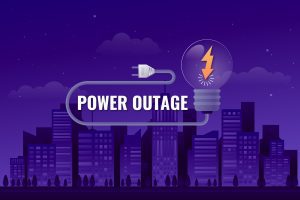6 Ways to Reduce Truck Rolls
While installing a solar system is the first step of going solar, maintenance is also a big part of keeping your system running healthily. That’ s where the concept of a truck roll comes in.
At Hoymiles, we have a vetted network of microinverter distributors across the globe. They help us reach local installers quickly and efficiently, so that our products can safely arrive at and be securely installed by our end-users. Therefore, reducing truck rolls and ensuring efficiency is of great importance for us – it means we can deliver the great service we’re known for faster and more conveniently.
Though some truck rolls are always unavoidable, most organizations can significantly reduce the number of times they’re necessary, and in turn, improve the profitability and efficiency of their field service. Below, we’ll cover six ways we reduce truck rolls and improve the efficiency of our field service.

WHAT IS A TRUCK ROLL?
Simply put, a truck roll is when a technician is dispatched to a customer’s location in order to provide physical service. They may be needed for anything from troubleshooting a minor issue to completing a repair.
Most customer support queries can be handled over the phone or via chat, and indeed, these are often the preferred methods of contact – both for customer convenience and for company profitability. However, there are times when phone or internet assistance just doesn’t cut it. In these (unfortunate) instances, a technician needs to be physically sent to site in order to provide help.
More specifically, the most common technical issues demanding truck rolls are those that require hands-on troubleshooting, like electrical repairs or physical installations that are best handled by a professional. In PV installations, truck rolls are often required when a component in the system malfunctions or breaks down (but there’s a way to improve this, which we’ll cover below).
WHAT ARE THE HIDDEN COSTS OF A TRUCK ROLL?
Truck rolls are, in general, extremely inefficient. While they can certainly solve your customer’s problem, they also result in wasted time and money for your organization. In particular, truck rolls result in added labor, opportunity, and vehicle costs. At the same time, they increase customer churn while decreasing customer satisfaction.
Labor costs
The time your technicians spend traveling to and from customer locations represents a significant added cost of labor. This is especially true if they need to make multiple trips in order to resolve an issue. In addition, in contrast with telephony or online support, there is also a higher cost associated with the time your staff spends at the job site – technicians (as opposed to support specialists) are often professionals with years of experience in their field, and expect to be compensated accordingly.
Opportunity costs
The aforementioned labor costs are compounded by the fact that technicians are often pulled away from other tasks in order to complete a truck roll. If your organization is small or has to make do with limited manpower, this can be a great concern. Every hour a technician spends traveling to and from a customer location is an hour they’re not available to work on something else, and these costs can add up.
Vehicle costs
Vehicle costs are another hidden expense associated with truck rolls. Cars, vans, and trucks require gas, maintenance, and insurance, all of which can add up over time. And if a technician is using their personal vehicle for a truck roll (which is common in smaller companies), this can result in added inefficiency because of time spent writing rebate requests and completing other paperwork.
Customer churn
Lastly, the poor customer satisfaction outcomes often associated with truck rolls can lead to higher customer churn.
In the real world, customers are often less forgiving than when using telephone or chat support – scheduling, delays, and logistical issues can lead to delayed service for customers. And unfortunately, even a small delay increases the odds that a customer will take their business elsewhere.
SIX WAYS TO REDUCE TRUCK ROLLS
Fortunately, you can reduce truck rolls in just a few simple steps. Here are six of the best ways to do it:
1. Take your system to module-level monitoring
The first and best way to reduce truck rolls is to install the right system in the first place.
In traditional PV systems, like those using string or centralized inverters, if a single module breaks down, a significant chunk of your solar array will stop generating power. This is because of how the system is wired, and means that any dysfunction usually results in a lengthy, inefficient truck roll that can take weeks to solve your problem.
But at Hoymiles, we specialize in module-level power electronics (MLPE) using microinverters. In contrast with traditional string or centralized systems, if a microinverter breaks down or under-performs, it has a limited effect on the overall function of your power plant because it’s only one microinverter or one module that stops generating power. This means the rest of your system can work as intended, continuing to generate power as we diagnose your problem.
This is extremely efficient because, with the help of our S-Miles Cloud platform, users are able to review how each PV module is performing independently of the others. By accessing data in a secure and user-friendly way, valuable insights can be generated for support teams and technicians, and owners can make informed decisions about much more granular aspects of their solar system’s operation and management, all while most of your system is still working.

Diagram showing how the Hoymiles PV microinverter system works
This way, either the precise technical issue can be detected at an early stage and solved immediately, or the wealth of information can help technicians analyze any problems efficiently – letting us handle everything we need to do in just one truck roll (as opposed to three or four, as is common with other types of systems).

How power generation of each module is reflected on S-Miles Cloud
2. Offer remote visual support as an alternative wherever possible
Remote visual support (RVS) refers to the use of technology to provide a technician with a view of the customer’s device or system, without needing to be on site. This can be done in a number of ways, including using video chat, screen-sharing software, or even just photographing the issue.

RVS is often an excellent alternative to dispatching a technician, as it removes the majority of travel expenses and ensures the technician’s time is spent solving the issue. This also benefits the customer, as they’re able to resolve the problem without having to wait for a technician to physically arrive on location.
With Hoymiles, when your PV microinverters are not functioning well, we ask users to run a handful of small, easy tests. This lets us carefully diagnose each system, allowing us to solve your problem on a remote basis (instead of forcing you to book a time and sending technicians to your location, which can take weeks).
3. Optimize your scheduling
Instead of eliminating truck rolls altogether, you can also optimize pre-existing ones to reduce both labor and vehicle costs in truck rolls.
As a rule of thumb, try to schedule appointments such that your technicians visit customers in the same geographic areas. This will minimize the amount of time they need to spend traveling, which can make up the lion’s share of expenses.
There are several ways to reduce truck roll costs – one popular method is bundling customers together into ‘clusters,’ which are groups of customers located within fifty or perhaps a hundred miles of each other.
You can tailor your cluster distance to suit the nature of your company: For example, a retailer might have clusters that are much smaller than a manufacturer. Adjust accordingly to optimize your company’s logistics.

4. Use a comprehensive knowledge base to consolidate information
A comprehensive knowledge base is an essential tool for any technician. It should include not only step-by-step instructions for resolving common issues, but also information on that customer’s particular device or system, including model numbers, software versions, and past service calls.
It’s an unfortunate reality that many truck rolls require repeated visits to the customer’s location as the technician attempts to resolve the issue. A comprehensive knowledge base can help reduce this need, as it allows the technician to troubleshoot and resolve common issues from afar.
Depending on the size of your company, this may take the form of enterprise resource planning (ERP) software, a self-service portal, or a cloud-based knowledge management system. However you choose to do it, a comprehensive knowledge base is an essential part of any technician’s toolkit.
5. Automate ticket routing and assignment
If you’re still assigning technicians manually, it’s time for an upgrade. Automating ticket routing and service call delegation is faster, more cost-efficient, and scalable; it means using technology to automatically determine which technician should be assigned to a particular service call, based on their skills, availability, and location.
This, of course, helps ensure that tickets are routed to the most appropriate technician, which can significantly reduce the number of truck rolls and their associated expenses. Rather than bloating truck roll costs with long on-site visits, the technician can get it done right and in a shorter period of time.
6. Empower your customers with self-service tools
Self-service tools allow your customers to troubleshoot and resolve common issues on their own, without needing to contact your support team. Whether through help articles, FAQs, or instructional videos, the idea behind self-service is to give your customers the information they need to help themselves. Though not every problem is solvable without dedicated technical support, you can significantly reduce the burden on your service staff by letting customers help themselves.
HOW MUCH CAN YOU SAVE BY REDUCING TRUCK ROLLS?
The exact amount you can save by reducing truck rolls will vary depending on your specific organization and the services it provides. However, if you’re able to reduce truck rolls by even 20% across your entire field service operation, the savings can be significant.
Assuming an average cost of a truck roll is around $250, and the number of service calls per week in a given region is 10, a 20% reduction in truck roll frequency translates to over $26,000 annually. That’s a significant chunk of change that can be reinvested back into your business, or used to improve customer service and satisfaction in that area.
THE HOYMILES GUARANTEE
Going with Hoymiles for your PV system? On the off-chance that your problem can’t be solved remotely, we arrange product replacements based on our warranty policy. Considering the time and money invested on our user’s behalf, it just makes sense. After all, Hoymiles wants the best cost-effectiveness for our customers, and we want your experience to be hassle-free.




